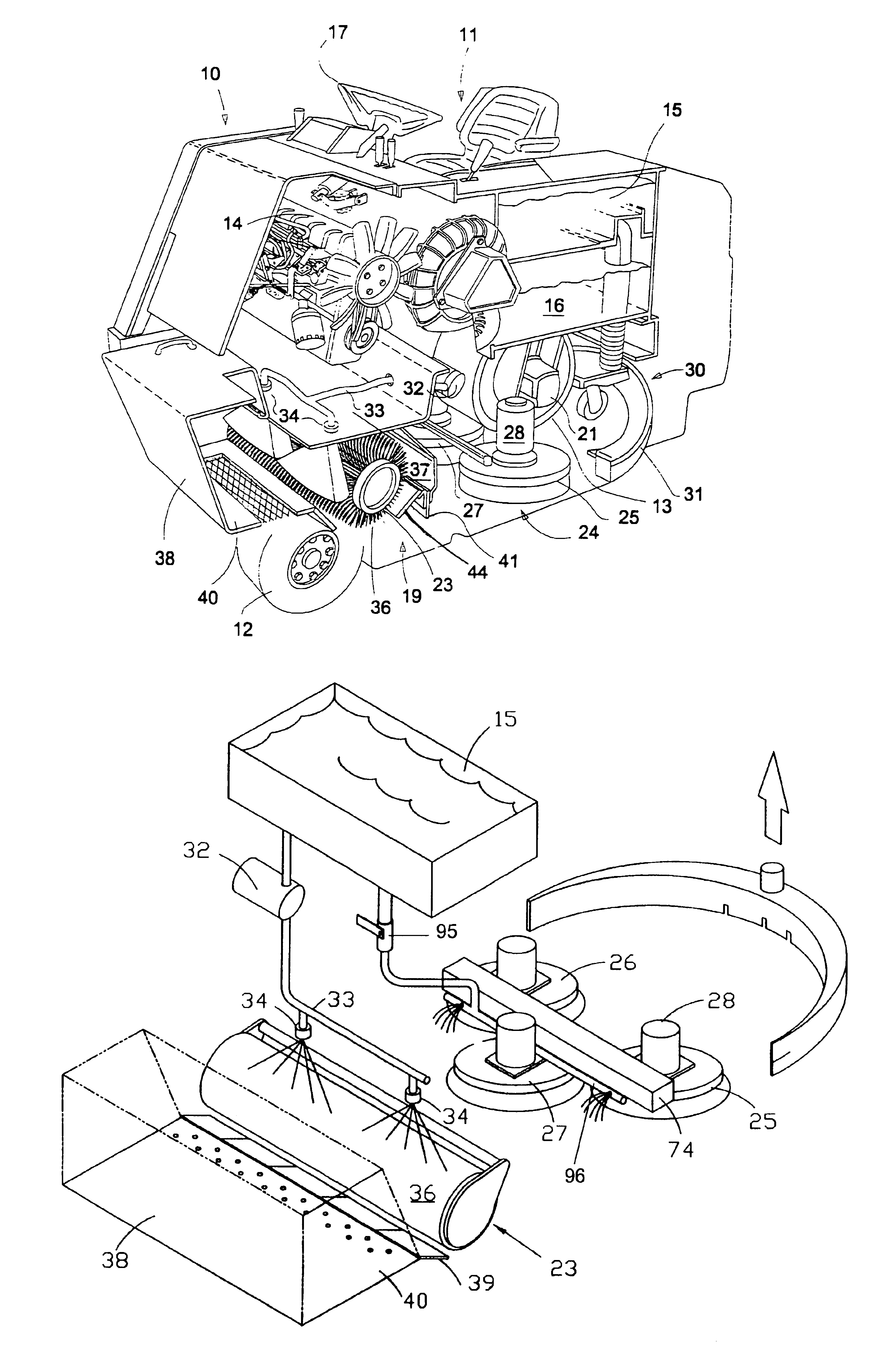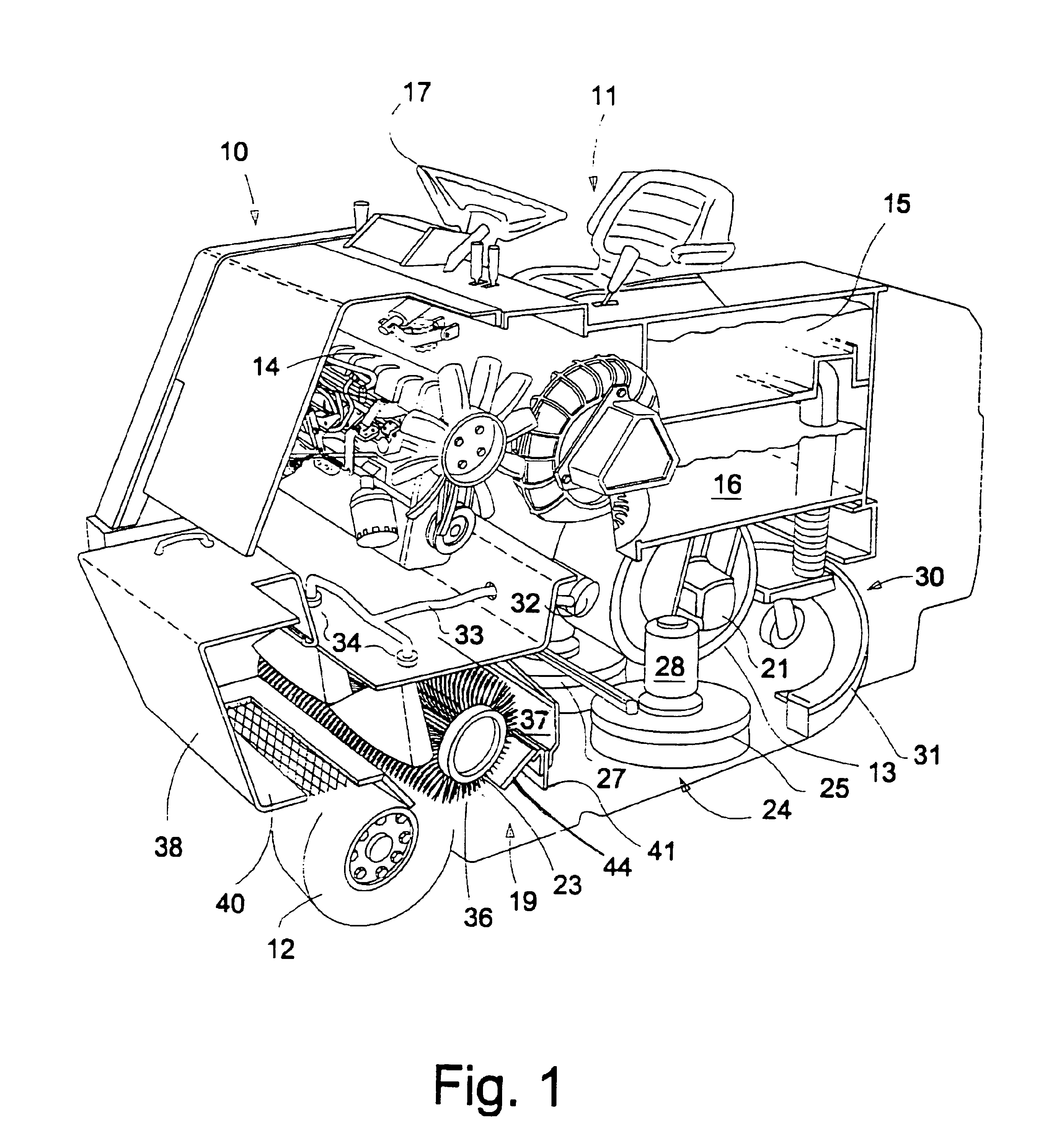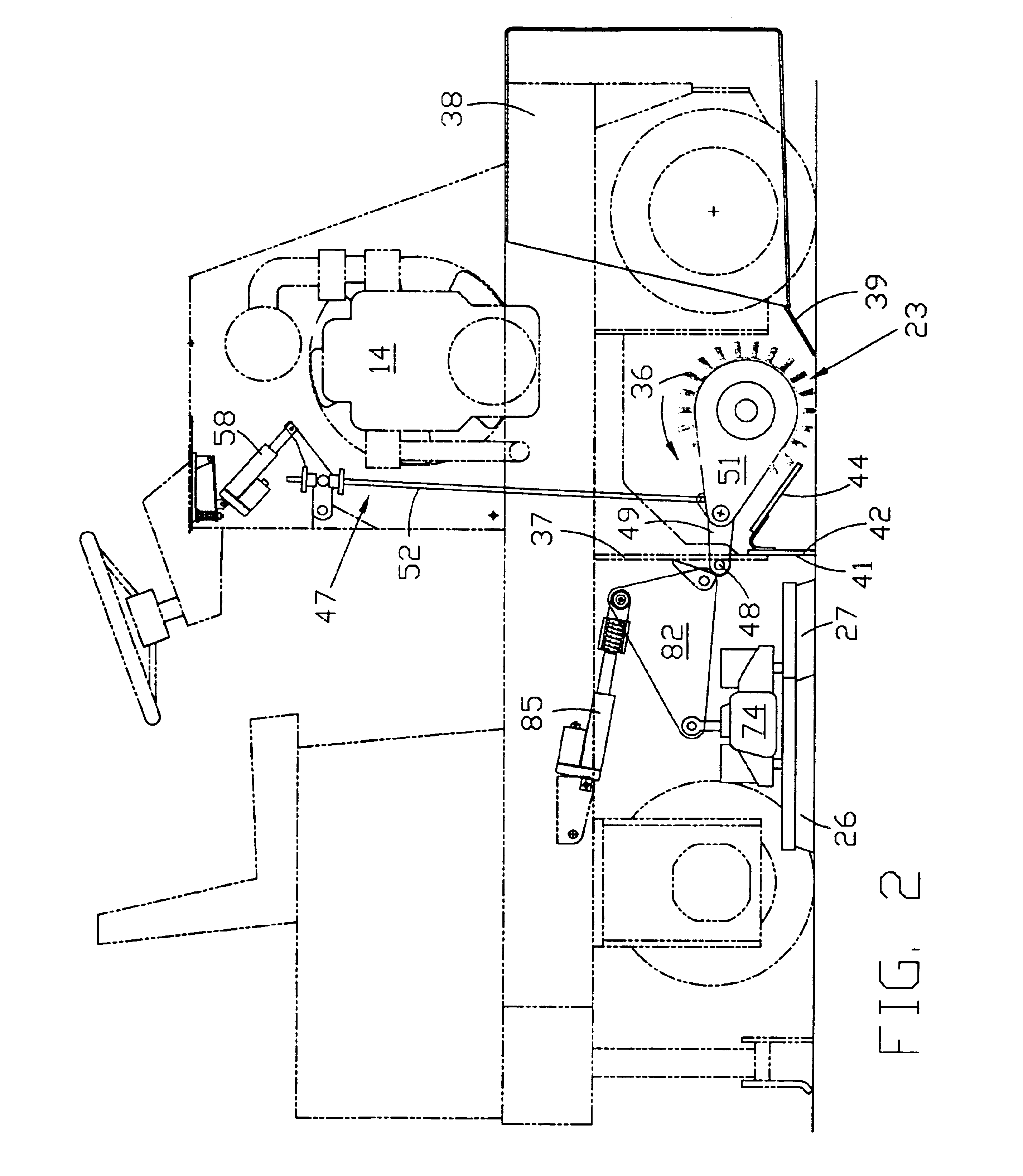Floor scrubber
a floor scrubber and scrubber technology, applied in the field of floor scrubbers, can solve the problems of reducing the useful life of the brush, increasing the wear of the bristle, and affecting the operation of the vacuum system, so as to avoid the problem of excess water application, reduce the total amount of liquid collected by the vacuum system, and operate longer
- Summary
- Abstract
- Description
- Claims
- Application Information
AI Technical Summary
Benefits of technology
Problems solved by technology
Method used
Image
Examples
Embodiment Construction
Referring first to FIG. 1, there is shown a floor scrubbing machine generally designated 10 in the form of a rider scrubber including an operator station generally designated 11, a pair of forward support wheels, one of which is seen at 12, a single rear steering wheel 13, an engine 14, a clean water or solution tank 15, and a recovery tank generally designated 16. The steerable wheel 13 is controlled by an operator seated at the operator station 11 by means of a steering wheel 17 and conventional steering mechanism. As is also known, the rear steerable wheel 13 is driven by a hydraulic motor 21 which is powered by the engine 14. The machine of FIG. 1 is covered by suitable paneling, and it is a self-contained vehicle. All of the components identified above are conventional, and need not be described further to persons skilled in the art.
The machine includes a forward scrubbing element 19 in the form of a conventional cylindrical brush 23 which will be described further below. Behin...
PUM
 Login to View More
Login to View More Abstract
Description
Claims
Application Information
 Login to View More
Login to View More - R&D
- Intellectual Property
- Life Sciences
- Materials
- Tech Scout
- Unparalleled Data Quality
- Higher Quality Content
- 60% Fewer Hallucinations
Browse by: Latest US Patents, China's latest patents, Technical Efficacy Thesaurus, Application Domain, Technology Topic, Popular Technical Reports.
© 2025 PatSnap. All rights reserved.Legal|Privacy policy|Modern Slavery Act Transparency Statement|Sitemap|About US| Contact US: help@patsnap.com



